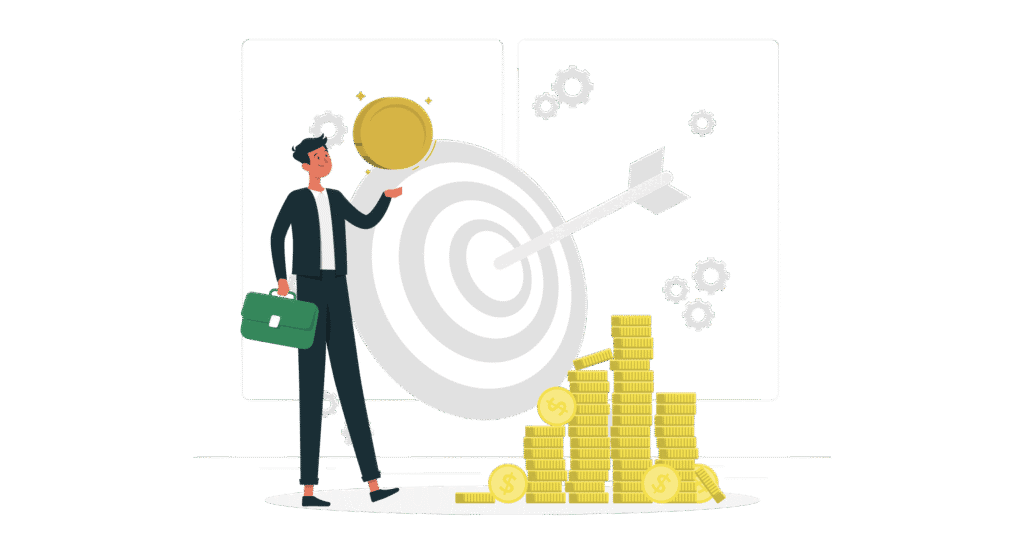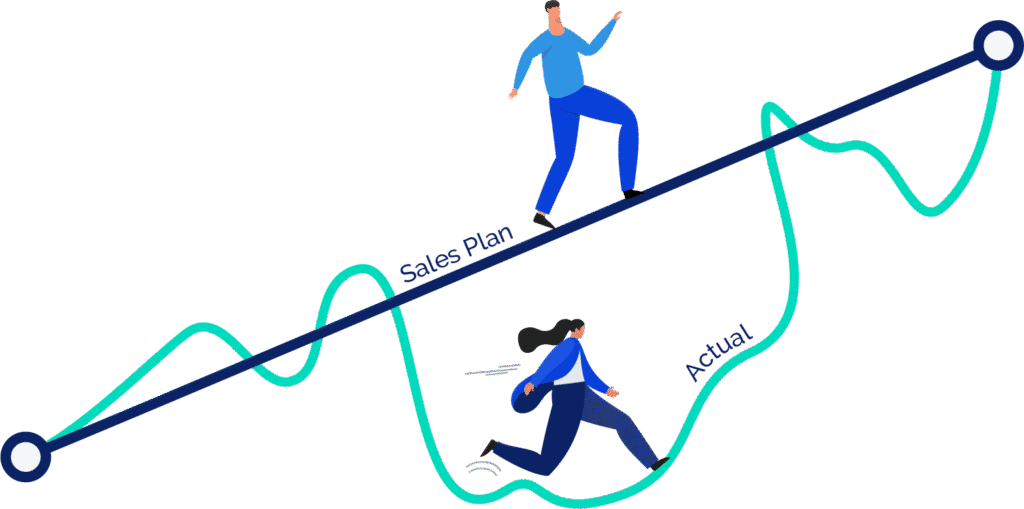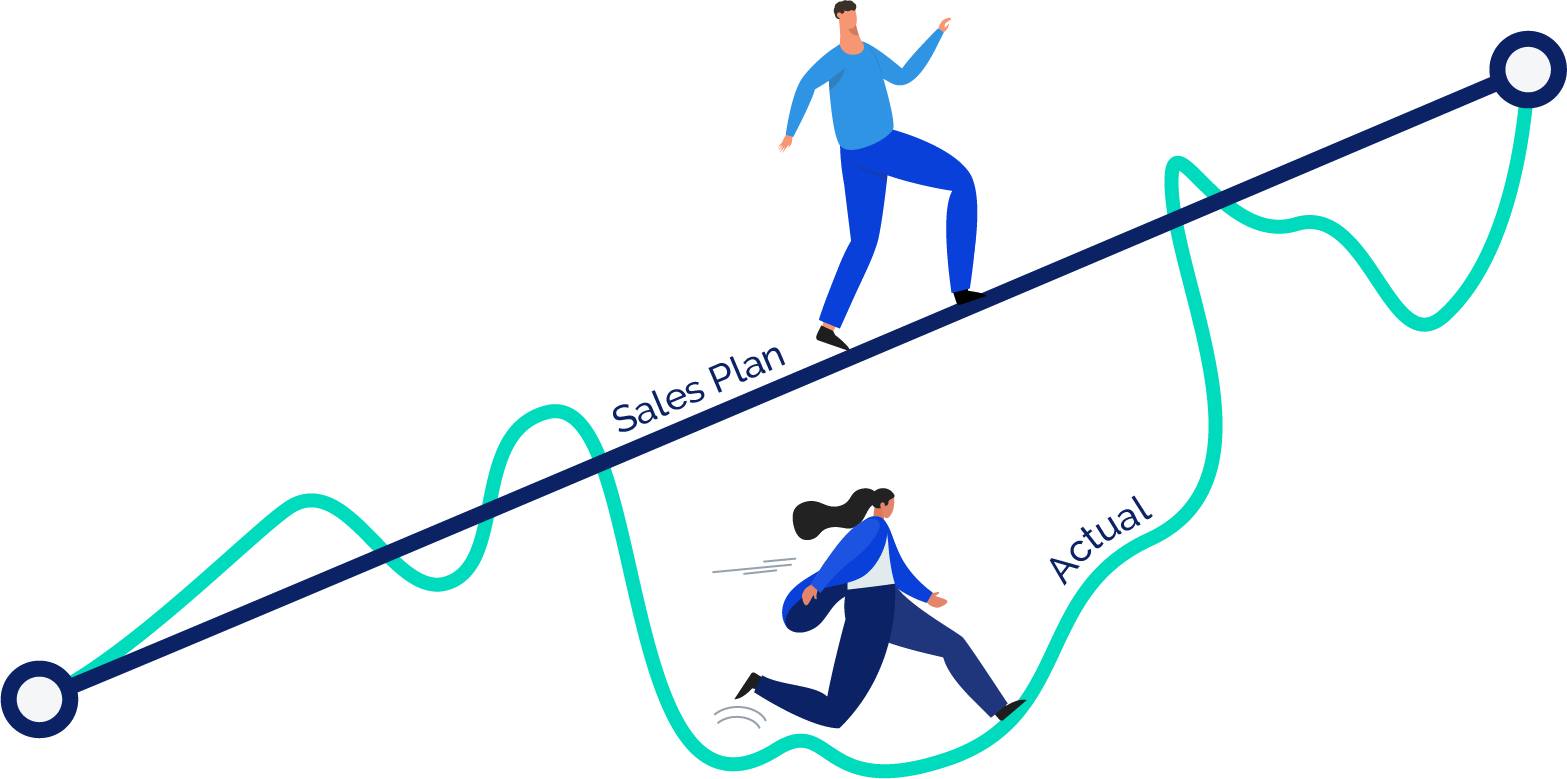Tips On Maximizing Sales Effectiveness
Maximizing sales effectiveness and revenue growth is a challenge facing not just sales management but frontline salespeople as well. If sales effectiveness is about the ability of a sales team to successfully convert prospects into customers and achieve sales goals, the question is, how does a company go about boosting sales performance? What are the various strategies, techniques, and tools the sales organization will use to improve the efficiency and productivity of the sales process?. In a nutshell, the sales strategy defines sales tactics, and sales tactics define sales effectiveness—the type of actions salespeople take to open opportunities, move deals forward, and then close.
To maximize sales effectiveness, then you must first understand the externals in your business and then make choices about how your strategy proposes to deal with the opportunities and threats inherent in those market realities. In any business, value is created or destroyed in the marketplace by interacting with customers, not in conference rooms or planning meetings. The challenge is to align selling behaviors with the required sales tasks and use the appropriate levers for doing so. Selling effectiveness is not a generalized trait. It’s a function of the sales task. And the task will vary according to the selling company’s strategy and the customer’s buying process.
Sales Effectiveness Considerations
The salespeople: who they are, what they know, and how you hire and then develop their skills and attitudes over time so that they are good at executing your strategy’s required sales tasks, not those of a generic selling methodology or what they learned at another company that made a different set of strategic choices.
Sales Force Control: the systems that shape ongoing performance management practices, including how the sales effort is organized and deployed, key performance indicators used to measure effectiveness, and sales compensation and incentive systems.
Sales Force Environment: the environment in which go-to-market initiatives are developed and executed, and how well sales staff are informed, engaged, and supported. how communication does or doesn’t work across organizational boundaries; how sales managers are selected and developed; how salespeople work as a team if and when that kind of coordination is important; and the conduct and consequences of performance reviews—one of the more powerful but underutilized levers for influencing behavior in organizations.
Sales Outreach Planning
Clarity about customer and opportunity selection helps sales leadership to organize more efficiently, specify the role or roles of the sales force in customer acquisition and retention, choose relevant metrics for measuring sales effectiveness, and understand how best to use selling resources, including channels and channel partners, alongside sales tools and methodologies relevant to sales pipeline management. Also, it’s important to distinguish between efficiency (doing things right) and effectiveness (doing the right things) in measuring sales activities. Depending upon the strategy, some sales forces require efficiency (usually, cost-efficiency) measures, while others require effectiveness metrics. But the most commonly used aggregate metric for evaluating a sales force is the sales expense-to-revenue ratio.
We know that sales outreach is a crucial aspect of the sales process. It involves proactively calling both existing and new customers to generate qualified opportunities. Typically, sales outreach includes everything from prospecting early on in the process to closing the sales later on in the sales process. A crucial part of sales outreach planning is to understand “return on sales effort,” in other words, where or who will the salespeople focus on within a given time period? What mix of new business versus existing customer revenue must be planned? Then what channels, products, offers, etc., will maximize the sales effort?

Pricing and The Cost to Serve
We know that profit is the difference between the price a customer pays and the seller’s actual cost to serve that customer. The costs of serving customers can vary dramatically for the seller. Some customers require more sales calls, or geography makes them more or less expensive to serve; some buy in a few, large, production-efficient order quantities, while others may buy more in overall volume but with many just-in-time orders that affect setup time, delivery logistics, and other elements of cost to serve. Customers also differ in their product customization and post-sale service requirements.
If these differences are ignored in the measurement of sales effectiveness, there are consequences for account management, customer acquisition, and competitive strategy. Why? If you can’t measure your cost to serve any given customer set, then you usually face several challenges. Salespeople will be driven by competing via pricing proposals. If the sales team chases volume, it can wind up damaging profits and the business system. It will be difficult to allocate available sales resources optimally. Finally, the business could be at the mercy of competitors who can measure their true costs and do these things more effectively.
The Sales Outreach Channels
Which sales outreach channels are deployed depends on the sales cycle, sales value, and customer profile. The key is to understand which channels deliver the best return for the effort and time involved. Whether it is social selling (social media outreach), emails, calls, meetings, events, or inbound marketing, etc., every business will have a different mix to maximize customer interactions.
Email Outreach.
Email outreach has become the default communication channel for most salespeople. The question has to be posed: is this because it delivers the best return or because salespeople lack the skill to engage with voice calls? While cold emails are less intrusive than cold calls, the sheer amount of cold or prospecting emails targeting buyers means the returns can be low. Research shows that highly targeted and personalized emails coupled with phone call outreach are the optimum method to use emails. Also, emails can be a useful tool if salespeople need to follow up on actions, reminders, or offers (to the existing customer base) or just have a quick clarification question. There are now multiple tools that will give you verified email addresses (and telephone numbers) for contacts in profile companies if using cold email outreach.
Phone Call Outreach
Proactive phone call outreach got relegated when inbound marketing became the flavor of the sales world. In a noisy, cluttered world with an overreliance on inbound sales leads, proactive phone outreach is regaining its importance as the way to identify and qualify new clients and then move them through the sales funnel. Proactive call outreach includes both sales prospecting for new business and existing customer development. Unfortunately, it is now a skill many salespeople struggle to use or master. However, let’s put this channel into context. Cold calling takes time, resilience, and effort, where ten to fifteen attempts is the norm to have even a brief introductory call. Don’t believe the myth that buyers don’t like cold calls; this was propagated by inbound marketing software and social media companies. Due to lower levels of human-to-human contact, cold outreach is once again a channel worth considering. When it comes to existing customers, research clearly shows they would like more “value-add” voice conversations. We are not talking about sales pitches but real, insightful conversations that bring unique insights to their business.
So, phone calls can be incredibly effective and should play some part in any sales strategy. They build customer loyalty, relationships, and trust. Plus, phone calls combined with emails are a powerful lead generation tactic. Phone calls should also be used where the product value proposition is complicated, to confirm meetings and provide updates on deliveries.
Social Selling
Social selling, or using the social media channels for prospecting and customer engagement, has grown rapidly in the last five years or so. These channels include Facebook, LinkedIn, Instagram, TikTok, WhatsApp, Pinterest, Snapchat, etc. It’s important to note that you don’t need to be on every social media site to grow a strong social media presence. A focused strategy that aligns with your target audience, content strengths, and available time will always beat being spread too thin. If your target audience is not active there, the platform isn’t worth the time and effort it will take to manage it.
The most successful social media business builders and salespeople understand that there isn’t a simple, immediate relationship between action and result. Results compound over time when you consistently do the right things. It’s like eating well or exercising. Building engagement, reputation, and trust on social media compounds over time and delivers tremendous rewards for many years. But only for those who move beyond requiring simple, immediate gratification.
Digital Channels
By 2030, almost eighty percent of all US retail sales will involve some form of online research, consideration, or purchase. Successful sales organizations don’t just “do digital”; they use the full arsenal of digital channels to engage and hook their customers at every step of their decision journey. The most successful salespeople have become resourceful risk takers and obsessive optimizers of digital channels. Using a variety of these, sales executives focus on three core elements to optimize digital selling: driving traffic to their sales platforms (engaging buyers, bringing more visitors directly), making online transactions easy and convenient (raising conversion rates, taking a larger share of wallet, facilitating checkout), and using the online connection with buyers to cross-sell, upsell, and retain customers (bringing buyers back, encouraging loyalty, etc.).
Live Chat
Chat can be harnessed to boost sales within selected product categories or to support marketing actions. Chat can also be utilized to close the deal when a visitor arrives at the website through a marketing campaign e-mail. Sales calls can be agreed upon via chat discussions with visitors identified as warm leads. Live chat is now relatively easy to incorporate on most websites or social media pages.
In-person Meetings
While webinars and web presentations have replaced in-person meetings, they still have a valuable role in multichannel go-to-market tactics. Of course, this depends on their size, opportunity value, cost to serve, and location. With technology like video chat, this has become much less necessary than it was in the past. For most sales teams, in-person meetings are reserved for the most important interactions. For example, it can be useful for a large deal or a deal with great potential. It is also useful for deals that are in trouble. Of course, in-person meetings are also popular if the opportunity arises. Even if you typically interact with a prospect or client remotely, you may want to schedule a meeting if the sales signals demand it.

Sales Effectiveness and Training
One big question every company has when it comes to sales effectiveness, accelerating growth, revenue, employee development, and productivity is, how can we maintain our competitive edge, build our brand, outsell our competition, and consistently achieve our sales goals?
Buyers and customers have evolved. So do most salespeople. That’s why top salespeople are great coaches. Instead of sales training salespeople with outdated techniques your competitors use, you must transform your salespeople into consultative sales coaches who coach customers to succeed.
To build the next generation of successful leaders and salespeople, start developing salespeople into consultative sales coaches. Imagine if every salesperson within the company learns and embraces the language and methodology of coaching. Only then can a sales organization create corporate alignment, a united front, a shared vision, the future leaders of your organization, and a top-performing coaching culture.
Instead of limiting the coaching conversation between a manager and a direct report, salespeople are now leveraging coaching conversations with every prospect, customer, peer, boss, and coworker. Now salespeople can coach their customers in a way that empowers them to find their own solution, one they would have greater ownership of, rather than being told what to buy.
Key Takeaways
Every sales organization needs to focus on the sale and continually win new business. They must maintain a steady flow of new opportunities and generate new business. To do this effectively requires the energy of the salespeople, sales management, and marketing working in the organization working as a team on the task at hand. That task being to retain and grow existing clients and to secure new, profitable clients.
When all the sales effectiveness component parts are aligned—marketing, new business sales, product delivery, account management, customer retention, customer satisfaction, and support—it can deliver big financial benefits and growth opportunities to any company. But to do this effectively, it needs a process, a game plan. It needs each of the players to know what part they play in moving the ball around the field of play, what it takes to score, and what is needed to win.




